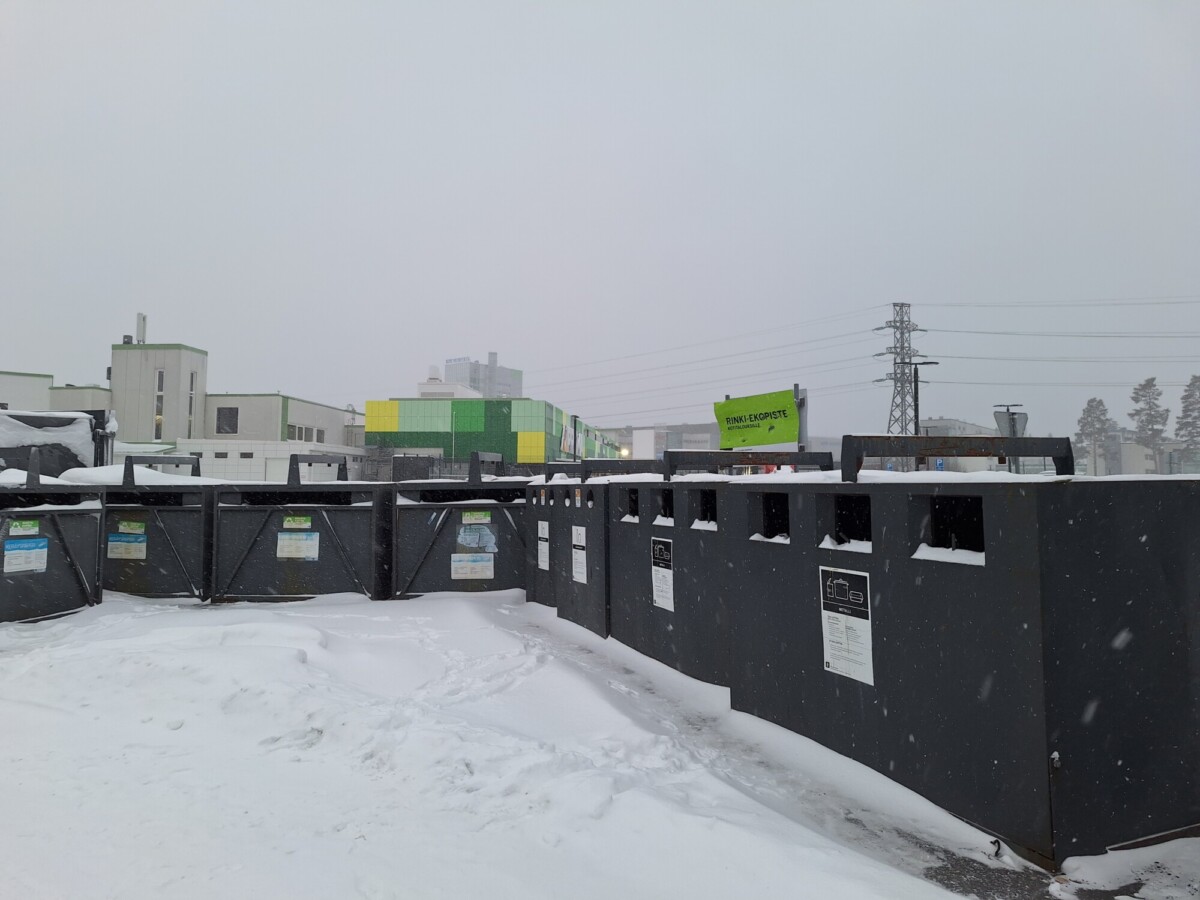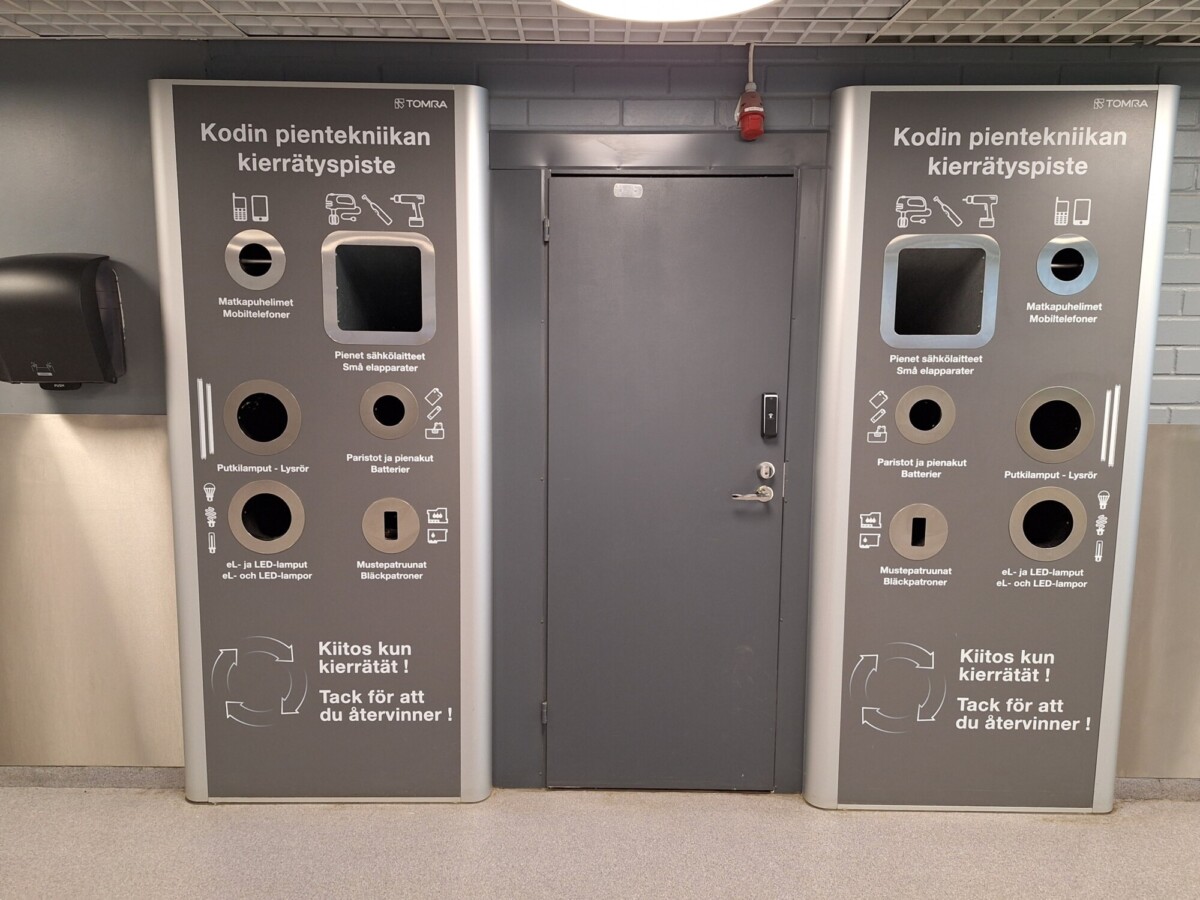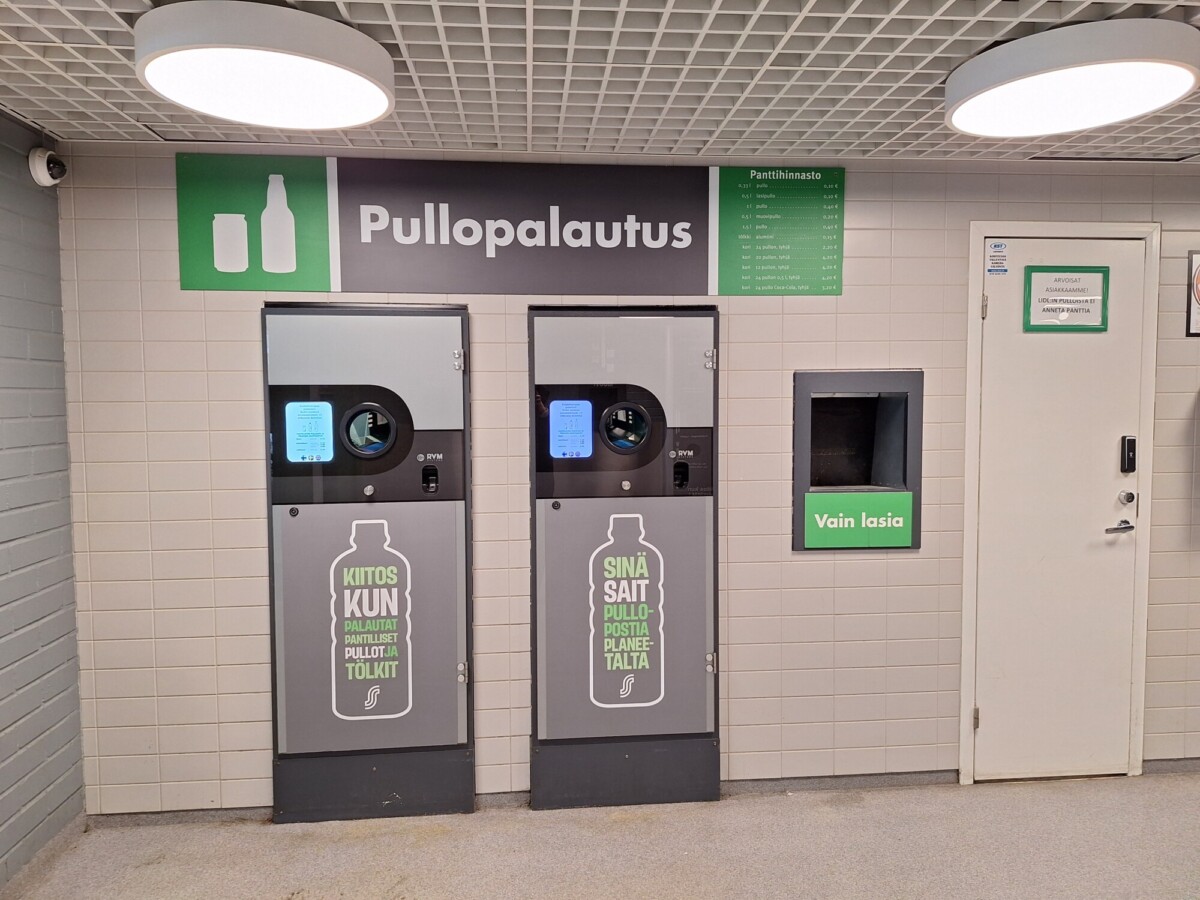
Savonia Article: Source separation of waste in Finland
This work is licensed under CC BY-SA 4.0
Separation of waste is an important part of recycling, since correctly separated waste can be further utilized in different ways. Source separation could also make it easier to understand how to reduce general waste output, since each different type of waste stands out, when a waste is separated.
In Finland, the separate collection of waste begins already at the same place it is generated at. In practice this means, that the waste is collected separately at households, public spaces, and all other facilities. All these facilities have separate bins for different waste types. For example, households have trashcans, usually under the kitchen sink, for all the separately collected waste types, which are then emptied in the waste collection point (picture 1). Public facilities often have waste bins with separate compartments for different waste types (picture 2), which enables further processing separately, since the bins can be emptied into separate collection container bins. The most common waste bins are biowaste, glass, metal, plastic packages, paper, cardboard and carton, and mixed waste.


Households, public facilities, and industrial sites all have waste collection points, with separate waste collection container bins. The waste bins from indoors are emptied in the container bins, keeping the separately collected waste yet separated, from where they are collected for further processing. Some facilities with larger quantities of waste generated, have deep collection containers, where the actual container goes underground, enabling much larger collection capacity.
Detached houses might not always have waste collection container bins for all the separately collected waste types. Instead, they can take separately collected waste types to recycling points, that are usually situated in the neighborhoods or at the proximity of supermarkets (picture 3). Biowaste might be handled by the households themselves, with their on composting system, usually at the backyard. Because detached houses have only one family’s wastes to handle, they might have waste collection container bins with more than one compartments to enable separate collection. This is besides ecological, also economical, since in Finland the fees for separately collected waste types are lower than for mixed waste. Therefore, the same waste collected as mixed waste actually costs more, than if collected separately.

Due to the producer responsibility in Finland, manufacturers and importers of electronic devices are obligated to also arrange collection of electrical appliance waste. These collection points are often at the stores selling electrical equipment. All convenience stores have a collection point for old batteries, and many have a recycling point for small domestic electronic appliances, where they can be sorted by type (picture 4). Stores focused on selling electronic devices are obligated to receive also larger electrical appliance waste and therefore often have a sea container for the purpose of this kind of collection. Electronics can also be taken to sorting stations. Returning old electronic appliances is cost-free for consumers.

Recycling of plastic bottles and cans is possible at grocery stores. All stores have a collection point for bottles and cans, where customers can return them when empty (picture 5). As a motivation for recycling bottles and cans instead of just throwing them into mixed waste, Finland has a deposit system, where the price of all bottle and can containers for drinks includes a small deposit, which can be cashed by returning them into the store. Old textiles are also being separately collected and the collection points can be found for example at shopping malls and supermarkets (picture 6).


Sorting stations accept almost all waste types. Consumers can bring certain waste types to the station cost-free, for some other waste types the waste management center takes a small fee depending on the waste type and the amount brought to sorting. After paying the possible fee, customers drive to the station and unload their waste to corresponding platform. For example, garden waste, hazardous waste, electronic devices and larger sized objects are usually brought to the sorting stations by individuals themselves. Waste management centers also offer touring collection services, where touring waste collection vehicles are brought for example next to supermarkets, so that consumers can bring domestic hazardous waste to be processed properly.
Expired medicine waste is collected only by pharmacies since it requires special processing. All pharmacies have collection points (picture 7), where customers can return expired medicine, used needles and syringes to be properly disposed. This service is cost-free for all customers.

When different wastes are separated correctly, they can also be further utilized efficiently. That’s why each waste collection point has its own role in making the correct way of recycling and separating waste easy and viable, but also making the utilization of waste as efficient as possible.
Authors:
Suvi Hackman, Research Engineer, Savonia University of Applied Sciences
Harri Auvinen, Research and Development Manager, Savonia University of Applied Sciences
Miika Virtanen, Project Specialist, Savonia University of Applied Sciences
Eevi Minkkinen, Research Engineer, Savonia University of Applied Sciences
Photos:
Eevi Minkkinen (2024)
Read more on the subject:
Finnish Packaging Recycling RINKI Ltd., Rinki eco take-back points: https://rinkiin.fi/en/for-households/rinki-eco-take-back-points/
SER-kierrätys – the official recycler of electrical and electronic equipment, EE-equipment recycling: https://serkierratys.fi/en/ee-equipment-recycling/what-is-weee
InfoFinland, Waste and recycling: https://www.infofinland.fi/en/housing/waste-and-recycling
Helsinki Region Environmental Services HSY, Waste and recycling: https://www.hsy.fi/en/waste-and-recycling/multi-compartment-container-packaging/